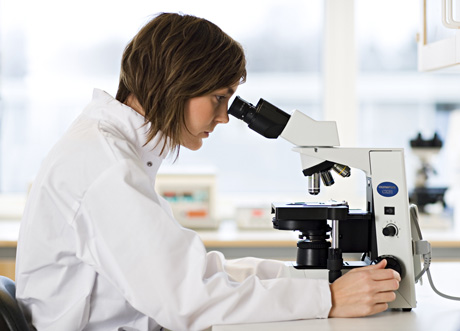
BIOTECHNOLOGY
INNOVATIONS
As soon as the recent outbreak of swine flu in late April 2009, Biotechnology companies and university labs were scrambling to find a remedy. Vaccines are usually taken from chicken eggs. A vaccine has been developed and tested, and has now been approved by the Food and Drug Administration (FDA).
Good thing Old McDonald had a chicken too!

The flu vaccine begins life inside a chicken egg. It replicates inside the egg, until the makers remove it and purify the contents to remove only the flu virus. It has been shipped to doctor offices all over the world. Yes that means that vaccines for the "piggy flu" come from chicken eggs. Robert Beishe, the director of the Center for Vaccine Development at St. Louis Unniversity, discussed on an interview for Nation Public Radio how to make vaccines. Beishe claims the egg based production takes too long. Most colleges and companies used what are call "embroyonated eggs" to harvest large amounts of the influenza virus. Most vaccine companies use this egg process because the embroyos are very susceptible to the virus. The nasal shot has proven to be the efficatious vaccine, over the flu shot. It only takes one egg to produce hundreds of sprays for those wishing to prevent the disease. Beishe and his fellow researchers at St. Louis University claim that tissue cultures would be a better way to create vaccines. Using dog kidney cell lines, one can grow the flu in the living cells.
The Lock of swine flu and the key viral genes and antival drugs...
Researchers at Novavax have been developing vaccines for the H1N1, headed by President Thomas Johnson. Novavax's will try to clone key viral genes. They want to use insect cell cultures to produce the virus-like particles. This approach is faster and safer than approaches that utilize live viruses, said Gale Smith, Novavax's vice president for vaccine development. Another biotechnology product that is used to counter the swine flu is the antiviral drugs. Antiviral drugs are prescription medicines used to treat the H1N1. The drug can make the illness less severe and can help the person feel better faster. It also prevents flu complications. The sooner a person is treated with the antiviral, the faster they’re recovery will be. The antiviral drug is 70-90% effective in preventing the disease, it even helps someone who does not have the disease yet, but might get it from someone else. The people who are prioritized to receive the antiviral first are people with a more severe illness of the swine flu. Then there the order for who receives the vaccine is as follows: children under the age of two, adults over the age of 65, pregnant women, people with chronic medical conditions, people 19 years of age or younger, and lastly the rest of the population.
So which one should YOU get?

There are two different vaccines that someone needs to be fully protected. The seasonal vaccine is distributed routinely every year and is for the regular flu virus. It is not expected to protect someone from the H1N1 virus, but is in anticipation for the regular seasonal flu. For adults, there is only one dose of the vaccine that is needed, but for younger children two doses of the vaccine may be required. The federal government purchases all of the swine flu shots and then distributes them to hospitals around the country. But the vaccine does have some side effects. The vaccine causes mild fevers, muscle aches, nausea, headaches, fainting, and runny noses. Gregory Poland, an immunologist and head of the Vaccine Research Group at the Mayo Clinic in Minnesota, has been working with a research team to find more effective vaccines though. Andrea Sant, an immunologist at the University of Rochester, says that traditional approaches may help. That those infected with swine flu, or those who want to prevent contraction, might be able to take common vaccines. These vaccines include those such as the frequently used subunit vaccines. Subunit vaccines consist of non-viable viral protein extracts, which Sant thinks could be enough. Sant says "I think it's not impossible to make a conventional vaccine for next fall," at the typical start of the flu season, she said.